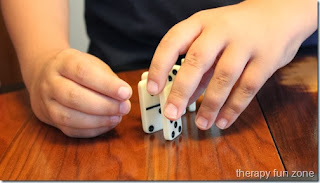I want to be an occupational therapist because I love how the body works. I think that it is so cool that we don't need to be plugged up, turned on/off..we just simply run off of electricity and the pumping of our heart. The way that the mind and body are intertwined and help influence are day-day activities and occupations is so wonderful. I always told my mother that I would make a difference in the world and I plan to change some child's life and help them. I love helping people, my heart is as big as the world and if I can make someone's life that much more simpler by helping them write their name or tie their shoes; I will love going to work everyday!
Priya's story below inspired me to want to work with children with special needs.
I will post 4 of the reason and if you would like to read more click the link!
1) Career in Demand: As a subset of the healthcare industry, it is set to take off in the next several years. As Baby Boomers inch their way towards their AARP years, the whole healthcare industry will be in demand.
2) No More Monotony: As an Occupational Therapist, you will likely never endure monotony on the job again. Since the clients you will work with may have several different problems, which you may choose to treat several different ways, and since each individual client is different, your days can be as variable or monotonous as you wish!
3) Dynamic Career: If you choose to specialize in pediatrics, it is not difficult to make a slight career change and work as a hand specialist or geriatrics. This ability to form your career to your personal whims is a great advantage of a career in OT, and you will not need to obtain an additional degree to change specialties. (However, extra training may be preferable in some cases.)
4) Make a Difference: At the end of the day, everyone wants to know that what they are doing is impacting someone in a possitive way. It's a human desire to help people and impact others. When your client smiles after achieving a goal, the delight in their eyes will stay with you and help you sleep well at night. That is very different from the draining work of cubicle jobs!






